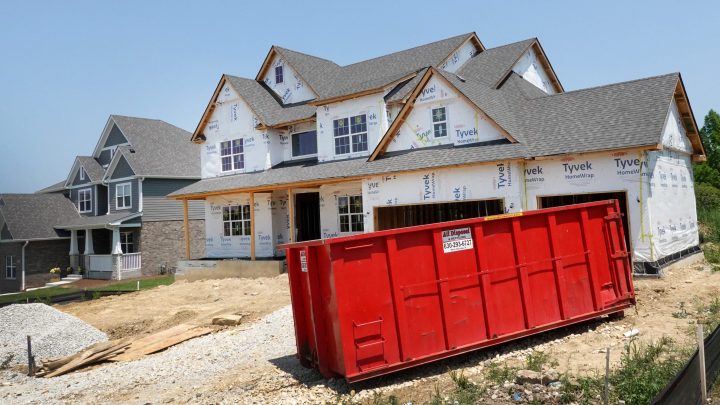
Housing construction was expected to fall in November. Instead, it surged.
Housing construction was expected to fall in November. Instead, it surged.

Housing starts — the number of new private residential homes whose construction, you know, started — were up in November. And not just by a little: They surged nearly 15% from the prior month, blowing expectations out of the water. In other words, 1.56 million single-family homes got on their way to being built last month.
What does that mean for the future of the housing market and the broader economy in which you and I live?
“I view this as a positive number, but [with] a little bit of grain of salt,” said Cris deRitis, deputy chief economist at Moody’s Analytics.
These numbers are seasonally adjusted, meaning they’re kind of corrected to account for seasonal patterns — more activity in the summer, less in the winter. “That’s the typical pattern,” deRitis said.
And the typical pattern is based on history. Problem is, recent history is a little wacko with the pandemic in the picture.
“We just want to be mindful that the data may not fully reflect the new seasonal patterns we’re observing,” deRitis said.
But setting statistical quibbles aside, the trajectory of the housing market is looking … not bad.
“The broad message is, despite the fact that mortgage rates are much higher than they were before the pandemic, the housing sector has held up pretty well so far despite those higher rates,” said David Mericle, chief U.S. economist at Goldman Sachs.
When the Federal Reserve started raising interest rates and the vice started to tighten around the housing market, there was already a severe shortage of single-family homes, which has kept home prices from crashing.
“And that means that the incentive for homebuilders to continue building at a quick pace so they can sell at those high prices has still been there,” he said.
The incentive is a little less there for builders of apartments, said Gus Faucher, chief economist at PNC Financial Services Group. Multifamily starts were more subdued last month. That’s because they’ve already had a rush of construction.
“That supply has come online, and that has slowed rent growth dramatically. So that’s made multifamily construction less feasible,” Faucher said.
But again, things are looking good overall. In the third quarter, housing actually helped the economy grow. “That’s the first time that’s happened in more than two years,” he said.
As inflation falls, interest rates fall and mortgage rates fall, Faucher said, you can expect housing to continue to pad the U.S. economy next year.
There’s a lot happening in the world. Through it all, Marketplace is here for you.
You rely on Marketplace to break down the world’s events and tell you how it affects you in a fact-based, approachable way. We rely on your financial support to keep making that possible.
Your donation today powers the independent journalism that you rely on. For just $5/month, you can help sustain Marketplace so we can keep reporting on the things that matter to you.











